Other Surrenders
In addition to the major surrender ceremonies, there were other significant events and interesting occasions where German surrenders took place.
25th April 1945:
The last Germans are expelled by the Finnish Army from Finland and retreat into Norway.
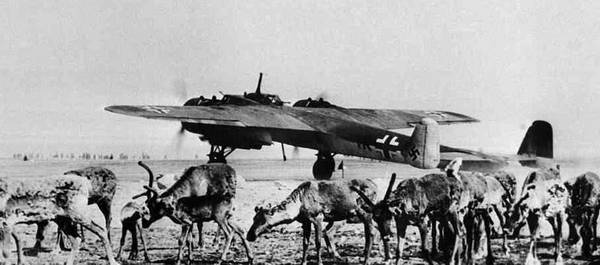
The image shows the Luftwaffe in Finland in earlier years.
Photo credit: Unknown
5th May 1945:
German forces in Bavaria surrender.
In the district of Baldham (east of Munich), American and German delegations met in the studio building of Josef Thorak (one of the two "official" 3rd Reich sculptors) to examine and markup maps indicating the areas and forces that will be surrendered to the Allies.
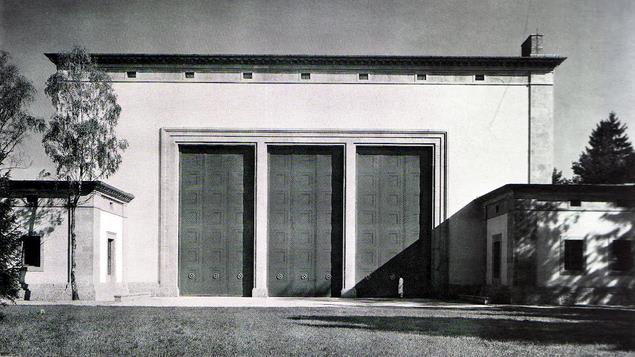
The massive doors of Josef Thorak's studio (designed in typical 3rd Reich style by Albert Speer).
General Hermann Foertsch agreed to surrender all forces between the Bohemian mountains and the Upper Inn river.
Leading the Allied representatives is US General Jacob Loucks Devers.
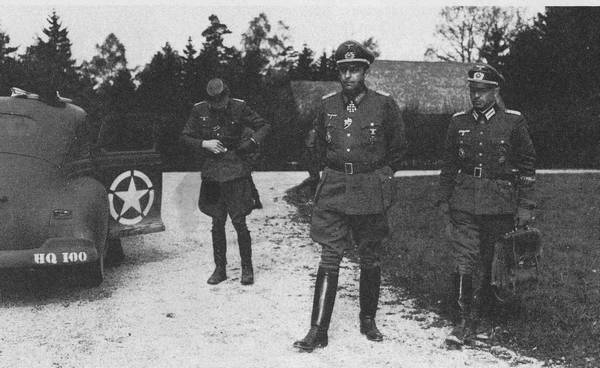
General Hermann Foertsch and his party arrive at the Thorak estate on the morning of 5th May 1945.
Photo credit: US Army
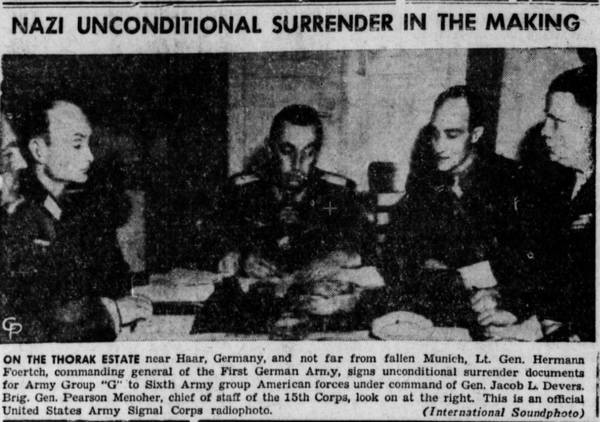
The document is signed. However, the lack of a French representative sowed discord between France and the US.
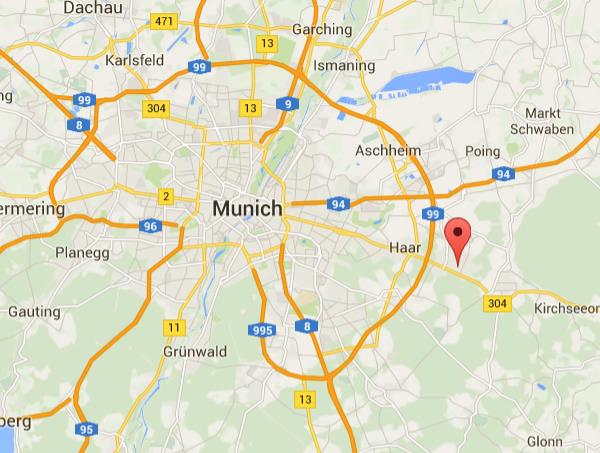
The location of Josef Thorak's estate at Baldham, east of Munich.
5th May 1945
The official end of the war in the Netherlands.
The day after the Lüneburg surrender (4th May) which included German forces in Holland, the Canadians decided to 'play it safe' and accept the capitulation of all German troops in the Netherlands on the 5th May 1945.

Canadian Lt. General Charles Foulkes (on the left side of the table) accepted the surrender of all German forces in Holland from General Blaskowitz in the Hotel de Wereld in Wageningen. Prince Bernhardt of the Netherlands was also present.
Photo credit: Unknown
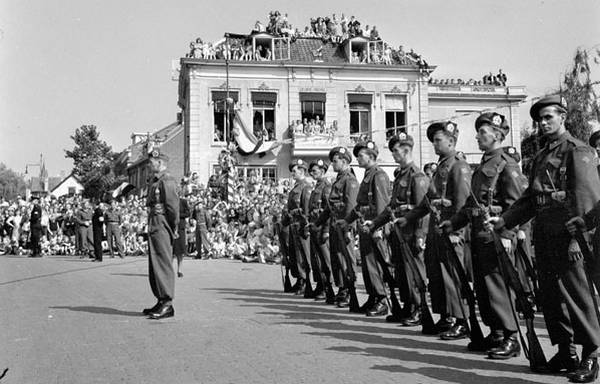
This impressive image is courtesy of the Lorne Scots website and shows a guard of honour outside the Hotel de Wereld where Prince Bernhart was unveiling a commemerative plaque on the 9th July 1945.
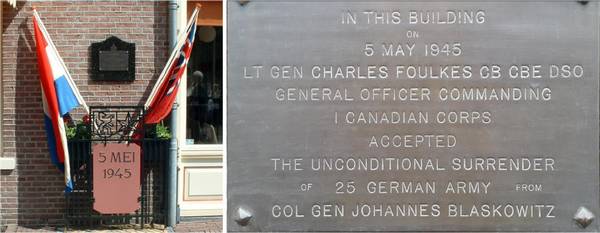
The location of the plaque and the text.
Photo credit: Traces of War
It is interesting to note that, although the negotiations took place in the Hotel de Wereld, the actual signing took place in the nearby University auditorium (Aula).

The University auditorium which is less than 100m away from the Hotel de Wereld.
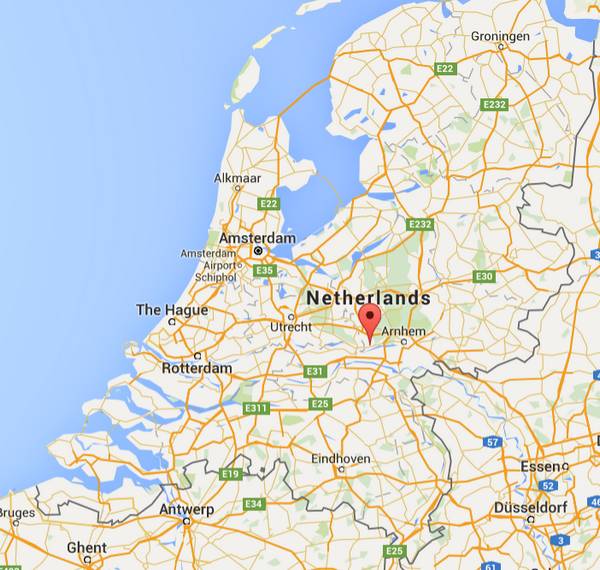
The location of Wageningen in the Netherlands.
8th May 1945:
German forces on the majority of the Channel Islands surrender.
At 15:00hrs on the 8th May, islanders listened as Churchill gave a speech which concluded by saying that, "Our dear Channel Islands will be liberated today".

At 07:15hrs on the 9th May, onboard HMS Bulldog, General Siegfried Heine signed the Instrument of Surrender on behalf of the German Command of the Channel Islands. General Heine was then ordered to “immediately cause all German flags and ensigns now flying in the Channel Islands to be lowered”.
Photo credit: © IWM (D 24594)
British forces landed in St Peter Port shortly after the official ceremony and were greeted by crowds of joyous but undernourished islanders.
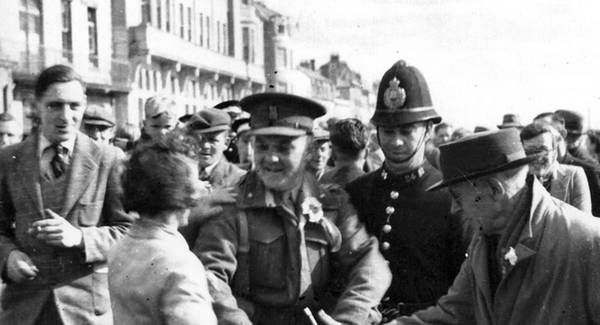
This photograph from the Channel Island Occupation Society's website was taken only a few hours after the signing of the German surrender.
The island of Sark was liberated the next day.......May 10th 1945.
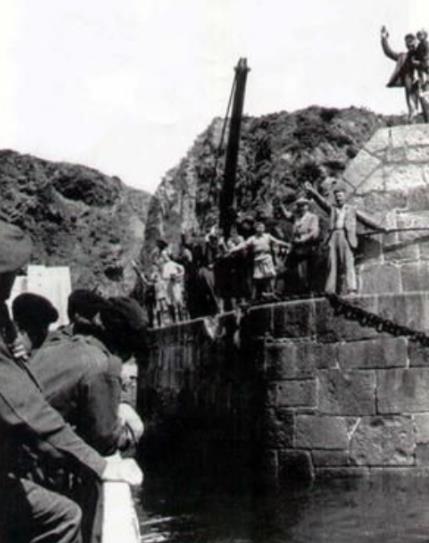
Sark Islanders welcome British troops to their island on 10th May 1945.
Photo credit: Channel Island Occupation Society
9th May 1945
The Garrsion of "Fortress Dunkirk" formally surrenders.
Earlier in the war, the major harbours on the French coast had been fortified and designated a "Fortress.......or Festung".
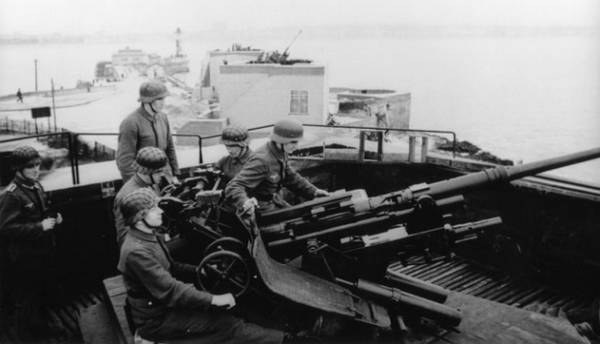
Some of the defences within a German Fortress Port.
Photo credit: Bundesarchiv
They were assigned especially dependable commanders who took the oath to "fight to the death". Following the Allied invasion all but three of these fortress ports had been captured but at the cost of high casualties and the facilities being totally destroyed. The three remaining fortresses were bypassed when it was realised that to capture intact a well defended port with well dug in and implacable defenders was next to impossible.

On May 8th, SHAEF sent two officers (one British and one Czech) to advise them of the general surrender signed in Reims.
The commander, Vice Admiral Frisius, gave the officers a written reply acknowledging compliance with the terms.
On the 9th May 1945 the Vice Admiral and his staff handed over an already signed surrender document and at 18:00hrs his men began laying down their arms.
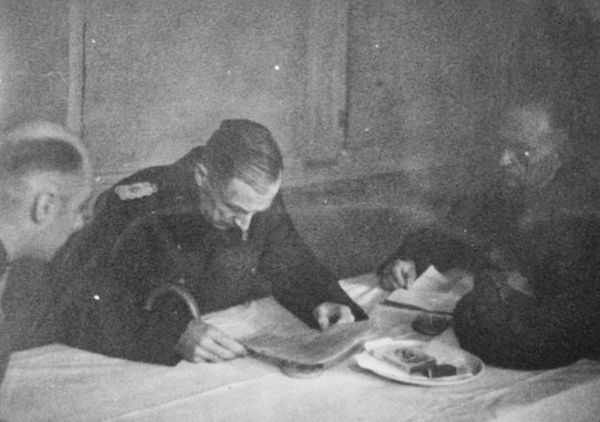
Vice Admiral Friedrich Frisius surrenders "Festung Dünkirchen".
Prior to this event, the fortresses of Lorient and St Nazaire had already surrendered on the 7th and 8th May 1945 respectively.

Following peace overtures by the Allied forces, the Germans surrendered Festung Lorient.
The picture shows a French officer waving a flag of truce from the banks of the River Etel.
Photo credit: US Army
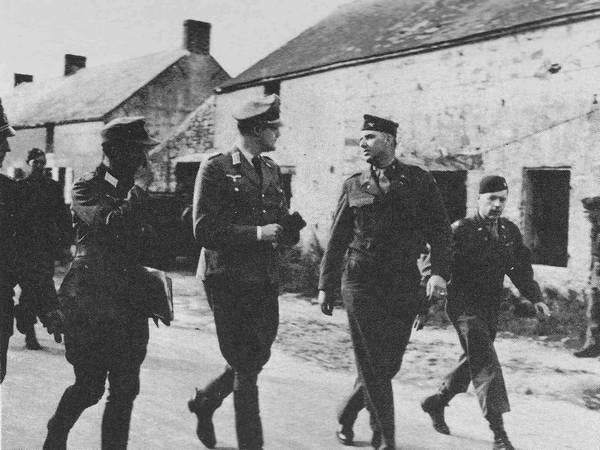
A similar scene was played out for the surrender of St Nazaire.
Col Keating discusses the surrender with Major Engelken, the aide to Hans Junck, Kommandant Festung St Nazaire.
Photo credit: US Army
12th-14th May 1945:
The SS Das Reich and Wallenstein Divisions were finally overwhelmed and forced the surrender in the area south-west of Prague.
Colonel General Löhr (German commander south-east Europe) surrendered after two days of bitter fighting at Poljana, 80km south-east of Zagreb.
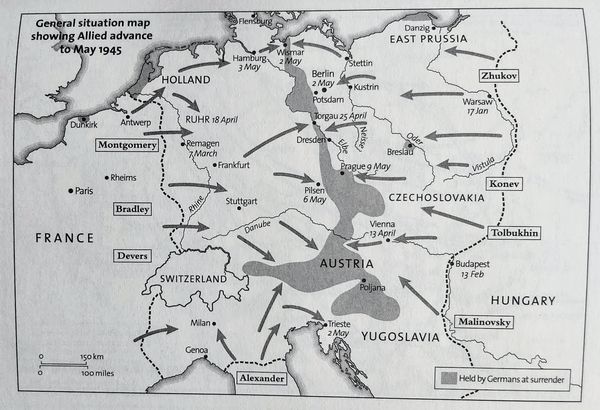
The German army was squeezed into the area between the Allied armies and was often very reluctant to accept the terms of the surrender order.
The German troops wanted to fight their way westwards towards the US/British lines but the surrender order demanded that they remain where they were and give up all weapons.
16th May 1945:
The German garrison on Alderney surrenders.
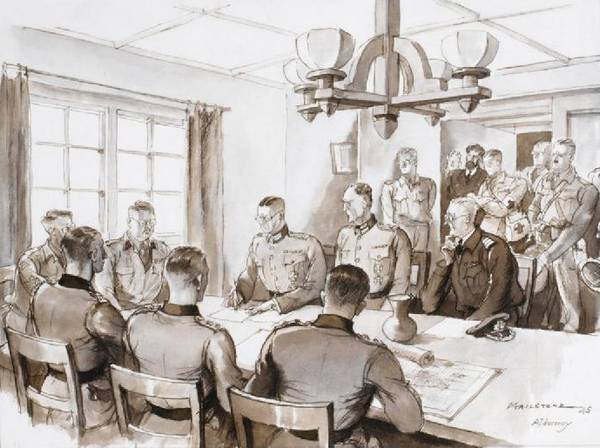
The German Officers' Mess on Alderney 16th May 1945. The Commandant of the island surrenders to the Colonel in charge of the British landing party.
Photo credit: Impreial War Museum......ART LD 5595
20th May 1945:
Canadian troops enforce the surrender terms on the German garrison on the Dutch island of Texel.
Georgian troops (former Soviet PoWs who agreed to fight for Germany) turned against their masters.
A reinforced German garrison fought to quell the uprising and the fighting on the island didn't end until the 20th May.
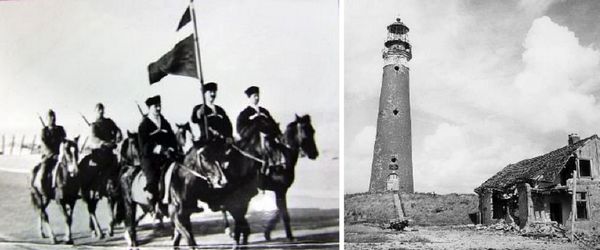
Some of the fiercest fighting took place in and around the island's lighthouse
4th September 1945:
A small group of German soldiers deployed on Bear Island to man a weather station surrender to Norwegian seal hunters.
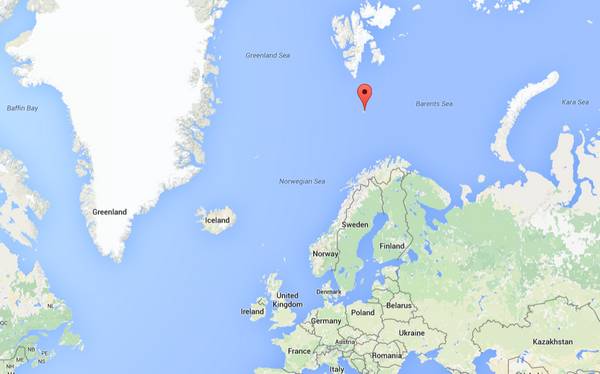
They lost contact with Germany in May 1945 and became the last German troops to surrender in WW2.
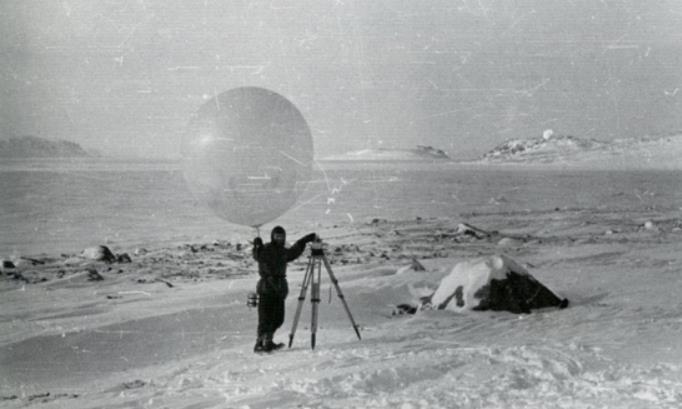
On 2nd April 1945 a member of the troop launches a radio sonde balloon from Bear Island.
Photo credit: The archives of Wilhelm Dege